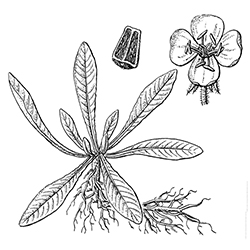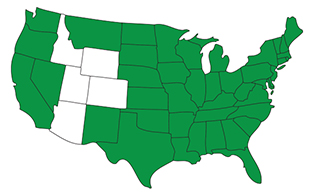

Evening Primrose
Oenothera biennis
Evening Primrose is commonly a biennial or winter broadleaf weed, but on rare occassions, it can grow as a summer annual broadleaf weed. This versatile plant is also known as Weedy Evening-primrose, German Rampion, Hog Weed, King's Cure-all and Feverplant.
Identify

Alternate

Upright

Entire

Lanceolate
Evening Primrose is a broadleaf weed with a vertical growth habit. Its stems are light-green or red and are covered with white hairs. Smaller secondary leaves often appear at the axils of major leaves on the central stem, and the underground structure is a fleshy taproot. Evening Primrose can be distinguished from Cutleaf Evening Primrose by its leaves, which have smooth edges instead of wavy and lobed edges. Blooming from June through October, Evening Primrose produces bright-yellow flowers with four petals. Flowers open at dusk and close at morning sunlight, hence the name Evening Primrose.
Life Cycle
This broadleaf weed grows in fields, thickets, glades, prairies, waste grounds, disturbed areas, cultivated areas, lawns and along railroads and roadsides. Evening Primrose can be found in most of the United States, with the exception of Alaska, Arizona, Colorado, Idaho, Hawaii, Utah and Wyoming.

Control
Oenothera biennis is tough to control when relying solely on cultural weed control methods. Weed-pulling and proper lawn mowing and watering techniques can help strengthen your lawn's natural defenses against broadleaf weeds, but professionally applied herbicides provide the best chance for complete removal.




Facebook
X
Youtube
Copy Link
Email